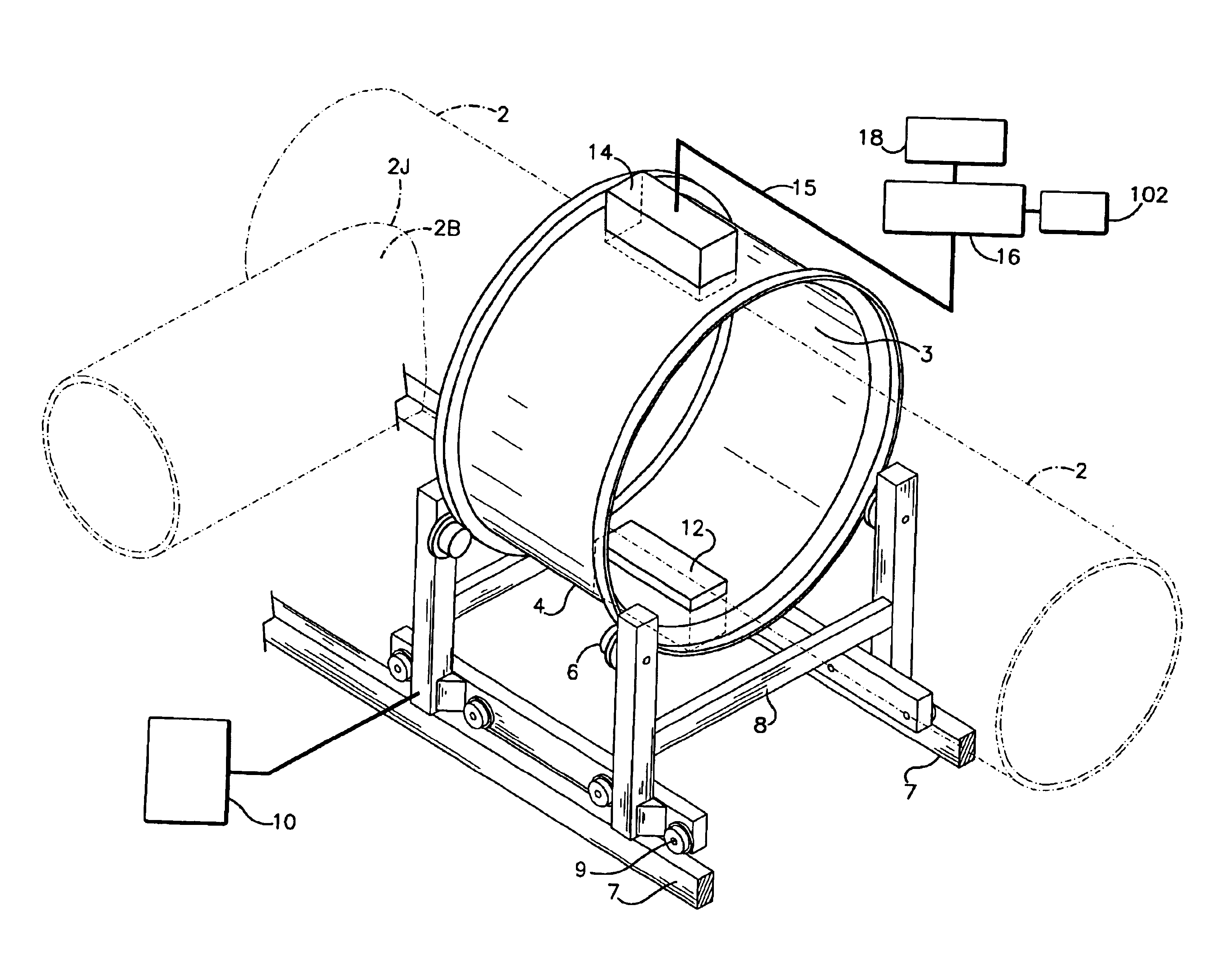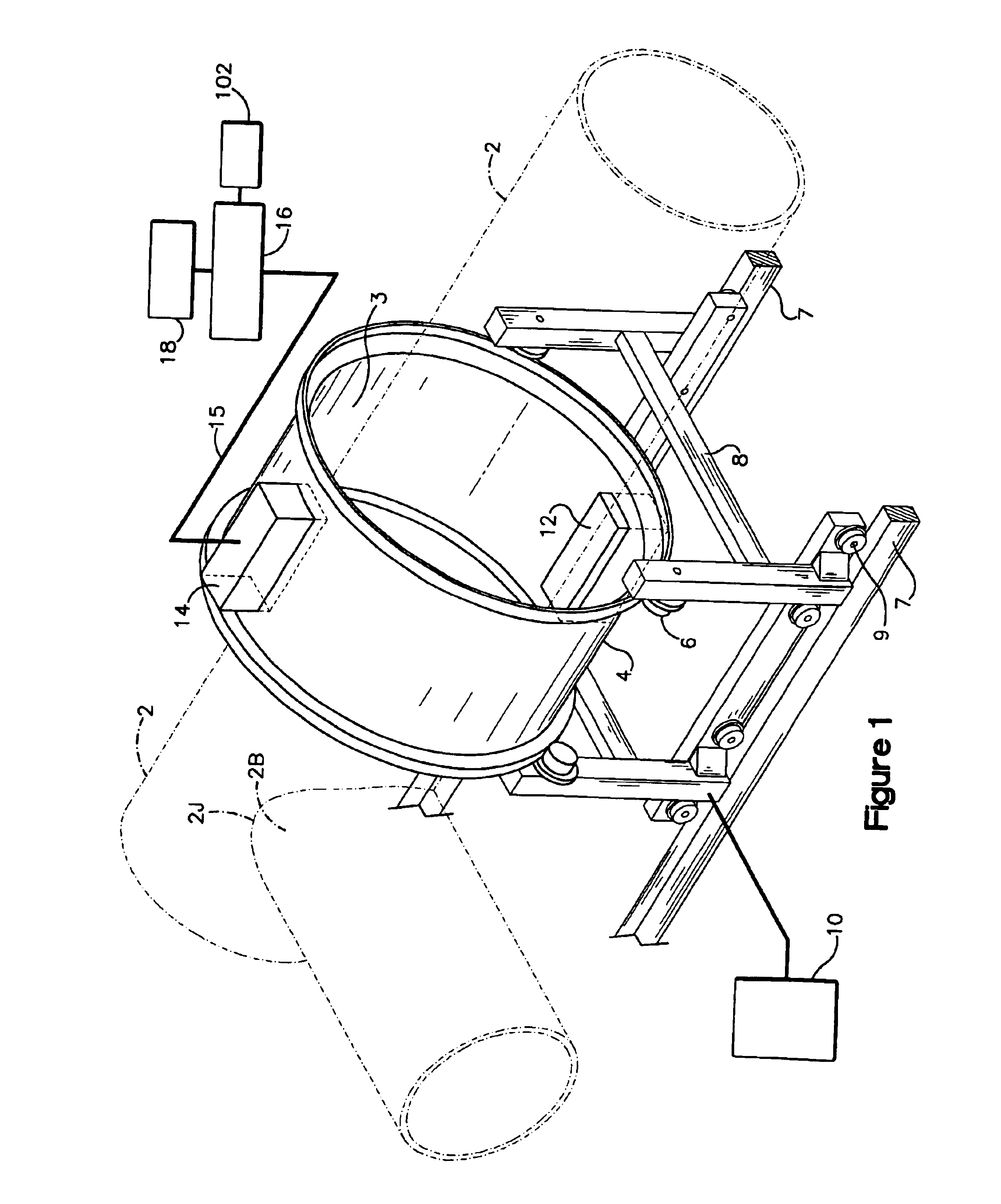High speed digital radiographic inspection of piping
a digital radiographic inspection and high-speed technology, applied in material analysis using wave/particle radiation, instruments, nuclear engineering, etc., can solve problems such as structural fatigue and crack formation, difficult to obtain fast and accurate information about vessel defects, and substantial monetary costs and schedule delays
- Summary
- Abstract
- Description
- Claims
- Application Information
AI Technical Summary
Benefits of technology
Problems solved by technology
Method used
Image
Examples
Embodiment Construction
[0024]Referring to the drawings wherein identical reference numerals denote the same elements throughout the various views, FIG. 1 schematically shows a radiographic inspection system 100 for the inspection of fluid transport vessels 2. As mentioned above, the term vessel collectively includes, but is not limited to, a pipeline, pipeline section, column, column section, heat exchanger silo, and heat exchanger silo section; and, unless otherwise specified, aspects of the invention are applicable both to pre-installation quality assurance testing as well as to post-installation vessel fault, defect, and anomaly detection.
[0025]As best shown in FIG. 1, the inspection system 100 generally comprises a set of at least two carriage guide rails 7 positioned parallel to the longitudinal central axis of vessel 2. The system further comprises a carriage 8, slidingly mounted on a set of at least four carriage-rollers 9 which are rotably mounted on the guide rails 7, enabling the carriage to mov...
PUM
| Property | Measurement | Unit |
|---|---|---|
| speed | aaaaa | aaaaa |
| distance | aaaaa | aaaaa |
| CT | aaaaa | aaaaa |
Abstract
Description
Claims
Application Information
 Login to View More
Login to View More - R&D
- Intellectual Property
- Life Sciences
- Materials
- Tech Scout
- Unparalleled Data Quality
- Higher Quality Content
- 60% Fewer Hallucinations
Browse by: Latest US Patents, China's latest patents, Technical Efficacy Thesaurus, Application Domain, Technology Topic, Popular Technical Reports.
© 2025 PatSnap. All rights reserved.Legal|Privacy policy|Modern Slavery Act Transparency Statement|Sitemap|About US| Contact US: help@patsnap.com



